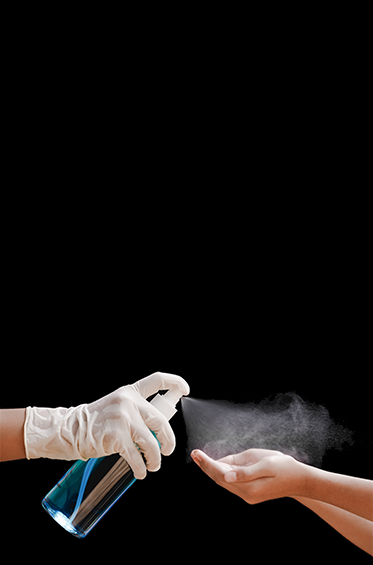China’s disinfection product industry has experienced significant growth in recent years, particularly in the aftermath of global health challenges. This surge has brought increased attention to the regulatory framework governing these essential products. As regulatory professionals and stakeholders navigate this complex landscape, understanding the key components of China’s disinfection product regulations is crucial for ensuring compliance and market success.
Legal Foundation
The regulatory framework for disinfection products in China is primarily based on two key pieces of legislation:
- The Law of the People’s Republic of China on the Prevention and Control of Infectious Diseases (Adopted on February 21, 1989; revised on August 28, 2004; effective from December 1, 2004)
- Administrative Measures on Disinfection (Order No.27 of the Ministry of Health, promulgated on March 28, 2002; effective from July 1, 2002; revised on December 26, 2017)
These laws provide the foundational legal basis for the regulation of disinfection products in China, outlining the general principles and requirements for their production, distribution, and use.
Regulatory Bodies
The oversight of disinfection products in China is primarily managed by:
- National Health and Family Planning Commission: Responsible for national-level supervision and management of disinfection activities.
- Provincial Health and Family Planning Administrative Departments: Tasked with implementing regulations and overseeing disinfection product manufacturers within their jurisdictions.
These bodies work in tandem to ensure comprehensive regulatory coverage across all levels of governance.
Classification of Disinfection Products
China employs a risk-based classification system for disinfection products:
- Category I (High-risk products): Includes high-level disinfectants and disinfection devices for medical devices, sterilizers, skin and mucous membrane disinfectants, and biological and chemical indicators of sterilization effect.
- Category II (Moderate-risk products): Encompasses disinfectants, disinfection equipment, chemical indicators not included in Category I, packaging of sterilized articles with sterilization labels, and anti-bacteriostatic preparations.
- Category III (Low-risk products): Covers hygienic products with low risk, managed through routine procedures to ensure safety and effectiveness.
This classification system determines the level of regulatory scrutiny applied to each product type.
Licensing Requirements
Manufacturers of disinfection products in China must obtain:
- Health License: Issued by the provincial health and family planning administrative department, valid for four years.
- Product Hygiene License: Required for new disinfection products using new materials, technologies, or sterilization principles, issued by the National Health and Family Planning Commission.
These licenses are crucial for legal production and market entry of disinfection products in China.
Health and Safety Evaluation
For Class I and Class II disinfection products:
- Manufacturers must conduct or commission a health and safety evaluation before market entry.
- The evaluation report must include product labels, instructions, inspection reports, enterprise standards, and other relevant documentation.
- Class I product evaluations are valid for four years, while Class II evaluations have no expiration.
The evaluation process ensures that products meet necessary safety and efficacy standards before reaching consumers.
Labeling and Instruction Requirements
Disinfection products in China must adhere to strict labeling requirements:
- Mandatory information includes product name, license numbers, manufacturer details, and active ingredients.
- Specific requirements vary by product type (e.g., disinfectants, equipment, sanitary products).
- Prohibited claims include unsubstantiated therapeutic effects, exaggerated efficacy, or implications of medical treatment.
Accurate and compliant labeling is essential for regulatory approval and consumer safety.
Quality Control and Testing
Rigorous quality control measures are mandated:
- Manufacturers must conduct factory inspections and product testing before release.
- Third-party testing by accredited institutions is required for certain assessments.
- Inspection reports must be objective, accurate, and compliant with relevant standards and regulations.
These measures ensure consistent product quality and safety across the industry.
Post-market Surveillance
Ongoing monitoring of disinfection products includes:
- Regular inspections by local health authorities at county level and above.
- Random sampling and testing of products in the market.
- Establishment of a disinfection product hygiene supervision information system for data analysis and policy formulation.
This surveillance system helps maintain product quality and safety after market entry.
Penalties for Non-compliance
Violations of disinfection product regulations can result in:
- Administrative sanctions, including fines ranging from 5,000 to 20,000 yuan for serious infractions.
- Potential revocation of licenses for repeated or severe violations.
- Legal consequences as stipulated in the Law on the Prevention and Control of Infectious Diseases.
These penalties underscore the importance of regulatory compliance in the disinfection product industry.
Conclusion
China’s regulatory framework for disinfection products is comprehensive and dynamic, reflecting the critical nature of these products in public health. As the industry continues to evolve, staying informed about regulatory changes and maintaining strict compliance is essential for all stakeholders. For a deeper dive into the specific requirements for manufacturers of disinfection products, please refer to our companion article on compliance guidelines for disinfection product manufacturers in China.
